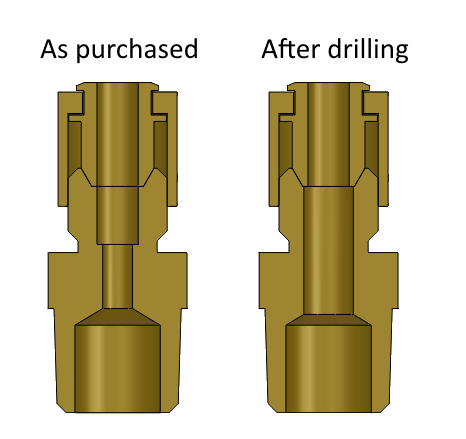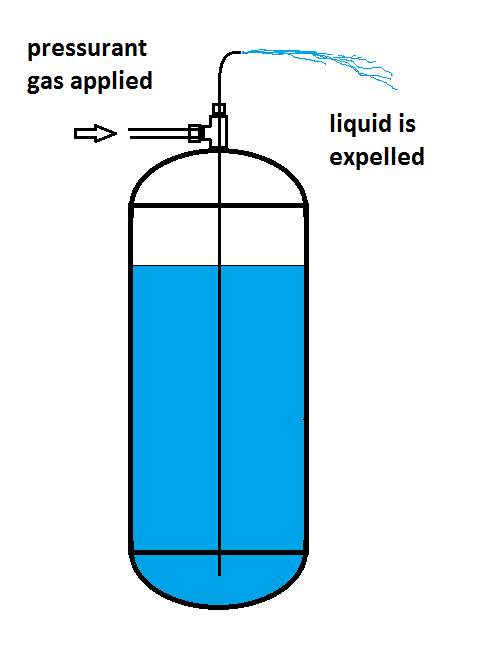by Richard Garcia, Director of Research, Reaction Research Society
I’ve had the opportunity to talk a lot with many amateur rocketeers getting into building liquid rockets. Because many commercial pressure vessels only come with one port, you often have to choose between making or modifying a pressure vessel. I always see a third option, dip tubes, being overlooked.
I would not recommend using a dip tube on a flight vehicle, but they are quick to put together for a test stand. A dip tube can be made from two parts: a tee fitting and a modified compression fitting.
Compression fittings do not normally have enough room to send a tube all the way through them. Most compression fittings purposefully have a stop to bottom out the tubing at a specific depth within the fitting. Usually these compression fittings have enough meat on them to drill through and open their internal diameter to fit the tube straight through them.

Putting this modified compression fitting along the straight path of the tee fitting will allow you to pass a tube through both fittings and into the tank itself. The tee connects on to the tank’s port and the tube goes down to just above the bottom of the tank (if connecting at the tank’s top). The branch of the tee feeds the tank ullage space with pressurant gas and the tube picks up fluid from the bottom of the tank as long as the liquid line is above the tube opening.


This can be flipped upside down, pressurizing through the tube and flowing the liquids out of the tee branch connection. It is always important to consider the amount of flow area in the tubing you are using as well as the annular flow area created by this combination of fitting as it is likely to be the area of minimum restriction to flow.

Also, instead of a tubing connection, one could put a thermocouple through the compression fitting of the proper size to make an internal fluid temperature measurement in the tank either immersed in the liquid below or measuring the ullage gas temperature in the top of the tank. This is a convenient way of mounting a temperature sensor.
P.S. Here are two kinds of tanks with ports on each end that are readily available. Try looking for automobile air tanks like this one from Speedway Motors:
https://www.speedwaymotors.com/Speedway-24-Inch-Aluminum-Air-Suspension-Tank-4-Gallon,126697.html
Or a gas sample cylinder such as this one from Swagelok
https://www.swagelok.com/en/catalog/Product/Detail?part=304L-HDF4-1000
For questions, contact Richard at
research@rrs.org








